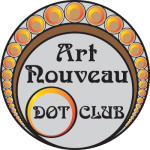Waves of Art Nouveau – Architecture in the Danube Region – Budapest up to June 18
The exhibition Waves of Art Nouveau: Architecture in the Danube Region can be visited from today until June 18th in Budapest. FUGA, Budapest Center of Architecture, displays material that will transport you in a spectacular journey into the Art Nouveau architecture of the Danube region.
The Danube flows nearly almost 3,000 kilometres from the Black Forest to the Black Sea, through ten countries and four capital cities. On the Danube banks there are the marks of thousands of years of history and a common art style. With such a variety of cultures and landscapes, it is easy to understand that there are plenty of river cruises offering itineraries from a few days to three weeks. Lots of tourists visit the area, and some are very interested in the track of Art Nouveau along this popular river.
Three of the capital cities that are in the river pathway (Vienna, Budapest and Belgrade) together with other cities that are either in the river side or are connected to it through channels (Bucharest, Ljubljana, Oradea, Subotica, Szeged, Sofia and Zagreb) have joined their efforts to form the Interreg Danube Transnational Programme. This exhibit is an example of this collaboration.
You can find other Art Nouveau cities along the Danube that are not included in this exhibit. One of them is Bratislavia, the beautiful capital of Slovakia, a city with a dozen of Art Nouveau buildings, being the Blue Church the most popular one.
The exhibitionWaves of Art Nouveau: Architecture in the Danube Region comprises three sections – the first one presents the history of this unique art style in Vienna and the career of Otto Wagner, whose buildings are perfect examples of the transition from historicism to Art Nouveau. The second part of the exhibition presents the work of renowned Hungarian architect Ödön Lechner and his followers. The third section, probably the most interesting, showcases the Art Nouveau of the region.
Towards the end of the 19th century, several artists, architects and thinkers began to feel that the academic framework and historicism that used to dominate the cultural scene had become meaningless and outdated, and started looking for fresh, modern, revolutionary ways to express the problems, desires and pursuits of their society.
It’s been told that the quick success of Art Nouveau’s was due to an approachable and fresh visual style, and the fact that it set architects and viewers free of the intellectual limitations prevalent for nearly 2000 years.
If you happen to visit Budapest in June, visit this nice exhibit that will let you discover something that the Danube cities have in common: Art Nouveau buildings and influence.
Info about the exhibit:
Location: FUGA: Budapesti Építészeti Központ, Petőfi Sándor utca 5) in Budapest
Price: Free of charge.
Date: From 30 May to 18 June 2018.
More information: CLICK HERE.
